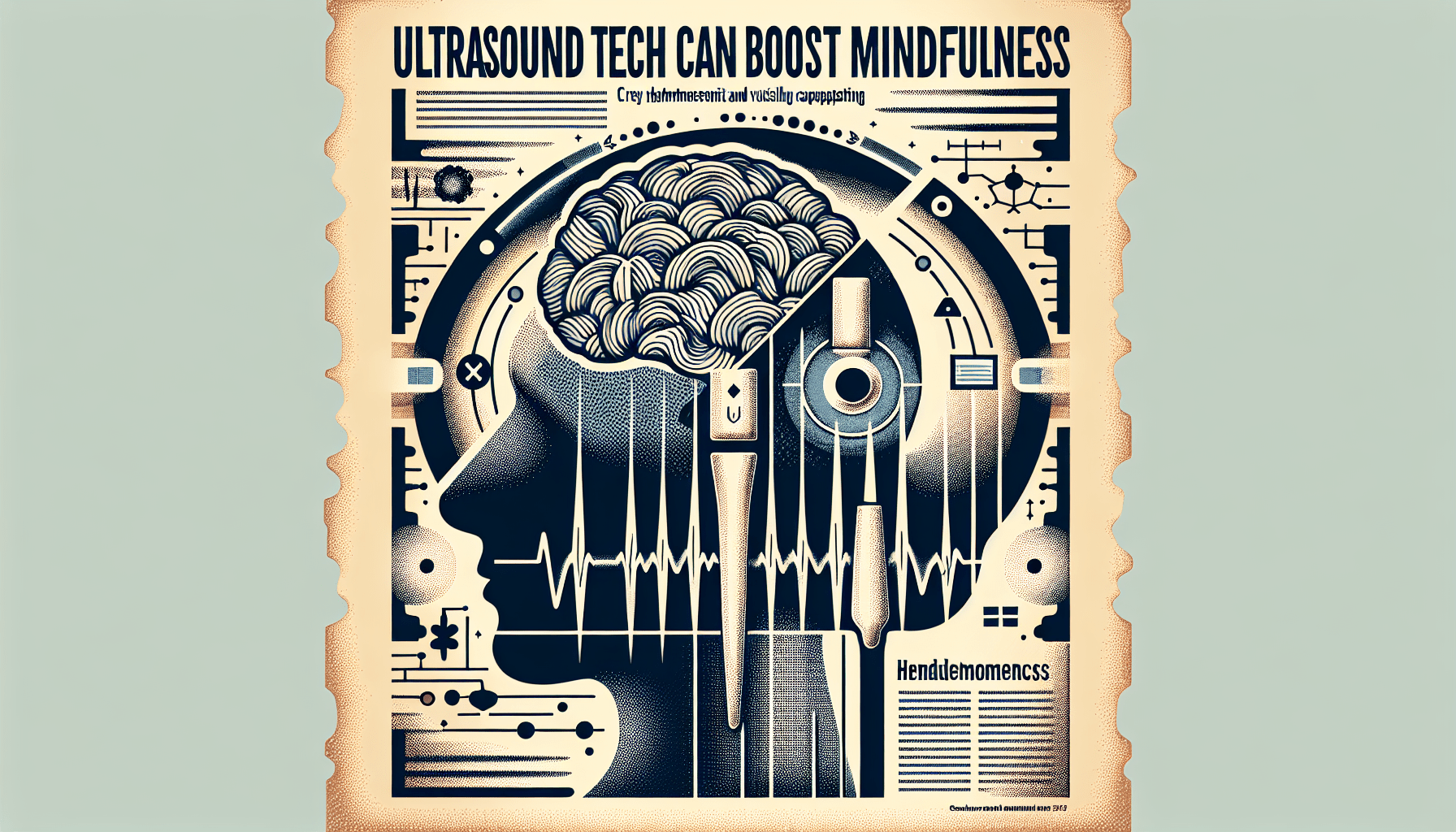Have you ever wondered if there might be a way to manage chronic pain without the typical reliance on medication? Many people battling chronic pain often feel weighed down not just by the pain itself, but by the side effects of their medications and the emotional toll it can take. There’s an emerging approach that might offer you some relief — mindfulness-based interventions (MBIs) delivered through telehealth.

What are Mindfulness-Based Interventions (MBIs)?
Mindfulness-Based Interventions are therapeutic techniques that incorporate mindfulness practices, such as meditation and breathing exercises, to help you manage stress and pain. The principle behind these techniques is to train your mind to concentrate on the present moment. By doing so, you might find relief from negative thoughts and feelings, reducing the overall burden of your chronic pain.
Components of MBIs
MBIs generally include:
- Mindfulness Meditation: Involves paying attention to your thoughts, feelings, and body sensations in a non-judgmental manner.
- Breathing Exercises: Helps to center your focus and promote relaxation.
- Body Scanning: Focuses on making you aware of different parts of your body and the sensations you feel.
- Cognitive Techniques: Aims to modify your thought patterns to reduce stress and improve your coping mechanisms.
Telehealth: A Convenient Solution
With the advent of technology, you now have the option to participate in MBIs from the comfort of your home through telehealth. This is especially beneficial if chronic pain limits your mobility or if you live in a remote area.
Benefits of Telehealth for MBIs
- Accessibility: Telehealth eliminates geographical barriers, so you can access quality care irrespective of where you are.
- Convenience: You can schedule sessions that fit into your daily routine.
- Anonymity: For those who are reluctant to seek in-person help, telehealth offers a more private alternative.
Study Findings on Telehealth MBIs for Chronic Pain
A study published in JAMA Internal Medicine has provided compelling evidence about the effectiveness of telehealth MBIs for managing chronic pain, especially among veterans. The research was conducted by Diana J. Burgess, Ph.D., from the Minneapolis VA Health Care System, along with her colleagues.
Overview of the Study
The study involved 811 veterans with moderate-to-severe chronic pain. Participants were divided into three groups:
- Group MBI
- Self-paced MBI
- Usual care
Key Metrics
The primary outcome was pain-related function, assessed using the Brief Pain Inventory interference scale at 10 weeks, 6 months, and one year. Other secondary outcomes included:
- Pain intensity
- Patient global impression of change
- Physical function
- Fatigue
- Sleep disturbance
- Social roles and activities
- Depression
- Posttraumatic stress disorder (PTSD)
Significant Findings
The study revealed that:
- Both group and self-paced MBIs significantly lowered pain interference scores compared to usual care.
- There were notable improvements in pain intensity, physical function, fatigue, sleep, social roles, depression, and PTSD in both MBI groups.
- The probability of a 30% improvement from baseline was higher in the group MBI at 10 weeks and 6 months and for the self-paced MBI at all-time points.
Table 1: Summary of Key Findings
| Outcome | Group MBI vs. Control | Self-paced MBI vs. Control | Usual Care |
|---|---|---|---|
| Pain Interference | -0.4 | -0.7 | Baseline |
| Pain Intensity | Improved | Improved | No Change |
| Physical Function | Improved | Improved | No Change |
| Fatigue | Reduced | Reduced | No Change |
| Sleep Disturbance | Reduced | Reduced | No Change |
| Social Roles and Activities | Improved | Improved | No Change |
| Depression | Reduced | Reduced | No Change |
| PTSD | Reduced | Reduced | No Change |
Implications of the Study
The results strongly suggest that MBIs delivered via telehealth can be both scalable and effective for managing chronic pain. This is crucial information for you if you’re looking for more holistic ways to manage your pain.
How to Get Started with Telehealth MBIs
Getting started with telehealth MBIs is relatively straightforward. Here are some steps to consider:
Find a Credentialed Provider
First, you’ll want to find a provider who is trained in mindfulness-based interventions and offers telehealth services. Make sure they have the necessary certifications and experience in the field.
Initial Consultation
An initial consultation will help you and your provider establish a baseline for your current pain levels and discuss your treatment goals. This is an opportunity for you to ask any questions and gain a clear understanding of what the sessions will entail.
Choose the Format
Based on the study, you have the option to choose between group sessions and self-paced modules. Both have shown to be effective, so the choice depends on your personal preference.
- Group Sessions: These offer a sense of community and shared experiences, which can be helpful if you find comfort in connecting with others facing similar issues.
- Self-paced Modules: These offer flexibility, allowing you to engage in the material at your convenience.
Technology Requirements
Ensure you have a reliable internet connection and a device like a computer, tablet, or smartphone. Most providers will offer technical support to help you get set up.
Long-term Benefits of Telehealth MBIs
While immediate relief is one of the advantages, telehealth MBIs offer long-term benefits as well. By consistently practicing mindfulness, you’ll likely find that your overall quality of life improves.
Emotional and Psychological Benefits
Mindfulness practices can help you manage the psychological toll that chronic pain often brings. Reducing depression, anxiety, and PTSD symptoms can make living with chronic pain more manageable.
Physical Health Benefits
Mindfulness practices promote relaxation, which can lower your blood pressure and improve sleep quality. Better physical health can indirectly reduce the amount of pain you experience.
Special Considerations
While telehealth MBIs show promising results, it’s important to consider:
Individual Differences
Not every approach works for everyone. The effectiveness of MBIs can vary depending on several factors, including the severity of your pain, your mental health, and your level of engagement in the practices.
Commitment
Like any form of treatment, mindfulness requires commitment and consistent practice. It’s crucial to stay committed to the routine for you to see benefits.
Complementary Therapies
MBIs can serve as a complement to your existing treatment plan. Talk to your healthcare provider about integrating mindfulness into your current regimen.
FAQs About Telehealth MBIs for Chronic Pain
Q: Are telehealth MBIs safe?
A: Yes, telehealth MBIs are generally safe and have minimal risk of adverse effects. Always consult with your healthcare provider before starting any new treatment.
Q: Do I need special equipment to participate in telehealth MBIs?
A: You’ll need a reliable internet connection and a device capable of video calls, such as a smartphone, tablet, or computer. Most providers will guide you through setting up.
Q: How long will it take to see results?
A: Results vary from person to person. Some individuals report feeling better after a few sessions, while others may take longer. Consistent practice is key to experiencing benefits.
Q: Can I just watch online mindfulness videos for free instead?
A: While online videos can be beneficial, structured programs led by trained professionals offer a more personalized approach and are generally more effective for chronic pain management.
Q: What happens if I miss a session?
A: Most telehealth providers offer recorded sessions or notes you can review if you miss a live session. Make sure to clarify this with your provider beforehand.
Conclusion
Incorporating mindfulness-based interventions delivered through telehealth can be a fruitful path for you if you’re looking to manage chronic pain more holistically. The evidence strongly supports the effectiveness of these interventions in improving not just pain-related outcomes but also broader aspects of physical and emotional well-being. Whether you opt for group sessions or prefer a self-paced format, committing to these practices could potentially offer you significant relief from the grip of chronic pain.
Don’t let chronic pain control your life. Explore telehealth mindfulness-based interventions and take a proactive step towards improving both your physical and emotional health.






